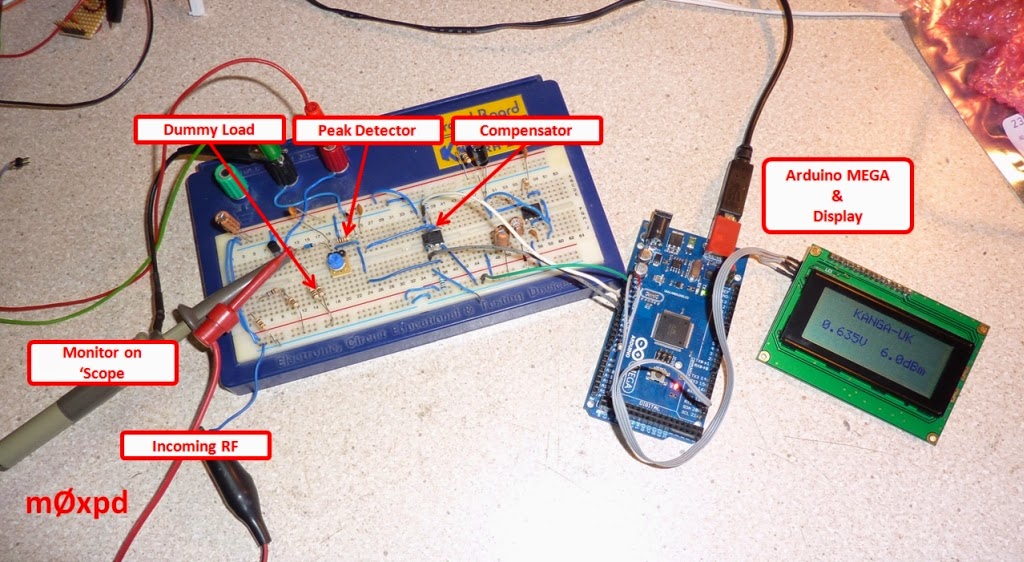It isn't that I haven't got enough dummy loads already - in fact there seem to be quite a lot of them here at m0xpd...
In the photo above, [1] is the classic parallel pair of 100 Ohm resistors, as was used on the original power meter experiment's breadboard last week. Nothing wrong with this, except for the QRPp handling capability of 500mW!
Example [3] uses three parallel 150 Ohm resistors - again of 2 Watt variety - to give 6 Watt total handling. There's a BNC socket, a peak voltage circuit and an LED for RF indication (this is a circuit from the G-QRP Club's Sudden Tx). So much for QRP.
Example [4] is a "real" dummy load, rated at 60W continuous, with the extra frisson of a hazardous substance warning sign - it contains Beryllium oxide.
Whilst on the subject of dummy loads, I thought I'd include 50 Ohm terminators in my photo for good measure, [5] & [6]. I often use these as a dummy "load" for a tiny transmitter in a QRPp context or in general RF experimentation. [5] is a "feed-through" terminator - which you'll need if you're using an oscilloscope to make certain measurements on RF systems (see, e.g. EMRFD, section 7.4) whilst [6] are the sort of BNC terminators used to stop reflections from improperly terminated cables.
There is also - of course - the dummy load in my "Made From Junk" Deluxe Versa Tuner II.
As you see - there's no shortage of dummy loads in the m0xpd shack - but there is a bit of a gap between the 6W and the QRO handling ranges. I wanted something that would span this gap.
Fortunately, a couple of packs of 390 Ohm 2 watt resistors from Ian, g4vap, have been lurking in the junk box for a few years...
Looking back, it seems I acquired them by chance in a "Grab Bag" at a Rally Back in 2011 and they've been waiting for me to get round to making them up into the dummy load for which they were intended. The g4vap resistors, each of 2W, give me 16W handling. More than enough for my low-power applications.
I knocked up a couple of end pieces from scraps of PCB material, copying the size of an S0239 socket...
and soon had the whole thing soldered up and ready to rumble...
I've left the central mounting wire long at this point - I may solder it directly onto an SO239 at some point but - for the moment - I'm using it on the power meter experiment...
I temporarily mounted the new dummy load on the power meter front-end prototype ...
and made some quick measurements - my new meter is able to measure easily up to the 5W outputs of my QRP rigs and more ...
The details of the power meter remain - at this stage - proprietary.
...-.- de m0xpd







































